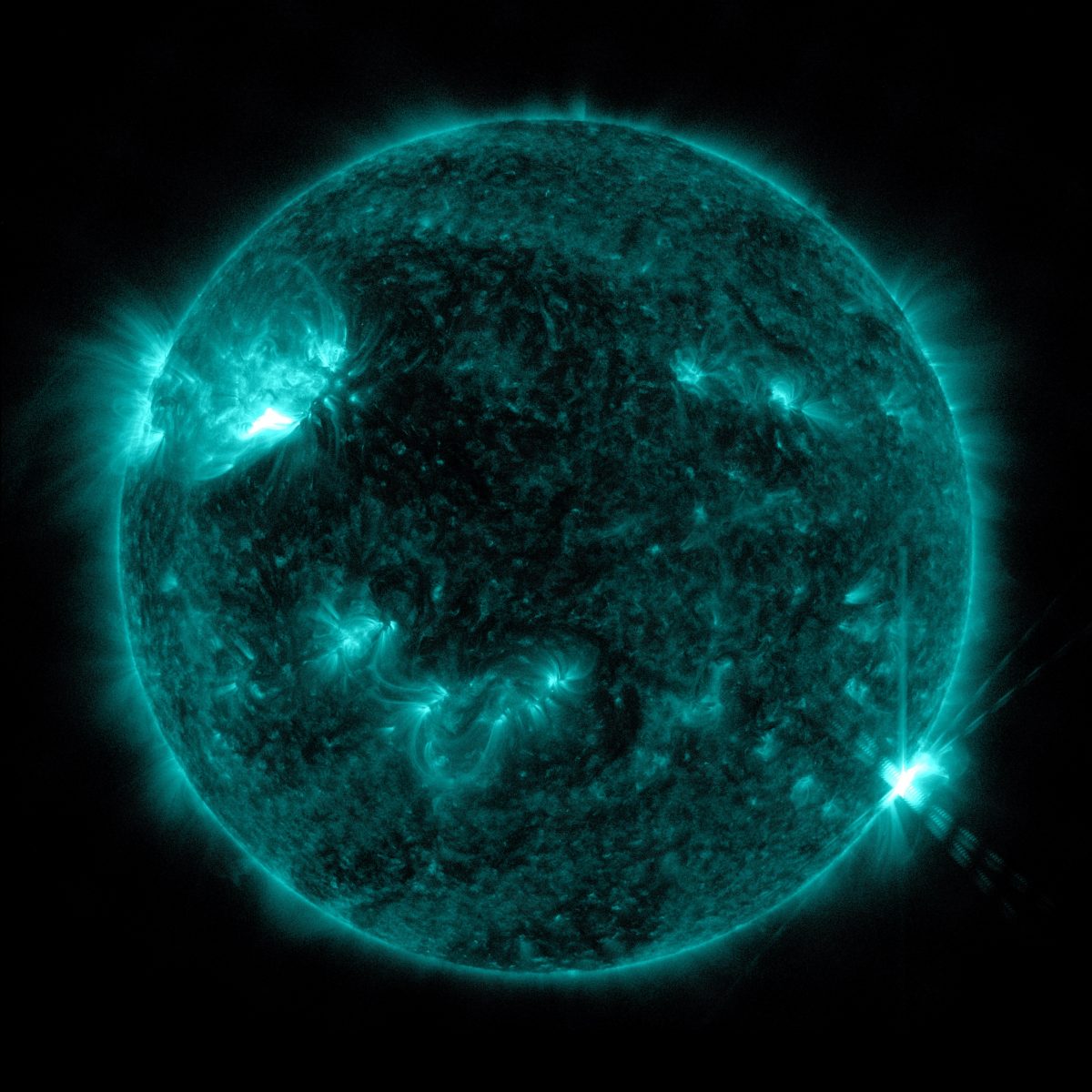NASA’s Solar Dynamics Observatory (SDO) has captured footage of a rare quadruple solar flare eruption. The eruption began around 1 a.m. on Tuesday, April 23. The near-simultaneous outbursts erupted from three different sunspots, as well as a large magnetic filament located between the sunspots.
While the blast sites were actually separated by hundreds of thousands of miles, the surface area between them all covered roughly a third of the solar surface facing Earth at the time. As such, Spaceweather.com has warned that we could see some interaction with Earth’s magnetic field due to the eruptions.
These rare solar flare eruptions aren’t something we’ve seen quite often, especially in such a small area, and the combined power of the blast is certainly concerning, as at least some of the debris is likely directed at Earth. How that debris will interact with Earth’s magnetic field and whether or not it poses a real threat to satellites and spacecraft in orbit around our planet remains to be seen.

If the debris from one of the flares does crash into Earth, it could trigger beautiful and vibrant auroras near the Earth’s magnetic poles. It could also lead to radio and GPS blackouts around the world, creating a small window of downtime for these important services.
These types of rare solar flare eruptions are called sympathetic solar flares, and they occur whenever at least two flares are linked together. This is at least the third flare of its kind that we’ve seen this year, though they do tend to be more likely around the solar maximum, which we’re expected to hit very soon.
The solar maximum is the most active phase of the sun’s 11-year cycle, and with it estimated to happen later this year, the sun’s various eruptions are likely only going to increase from here. That means more chance of rare eruptions like this, as well as more chance of radio and GPS blackouts due to magnetic storms happening when the solar energy collides with Earth’s magnetic field.
